
"I hope our country can step up efforts to promote ecological conservation and set up more wildlife protection zones, so that we can all be surrounded by green hills and clear rivers. Let’s live equally for all of nature’s beings."-- Nature photographer Gu Xiaojun
Q:How long have you been taking photos in the wild?
A:I’ve been taking photos of wild whooper swans since 1992. From that point, I fell in love with photographing birds. So I’ve been to many protection zones in this country.|
 Photographer:Gu Xiaojun |
Q: What’s the biggest challenge you’ve ever met?
A: I’ve learned a lot about birds thanks to my long-term dedication to capturing their images. The people around me understand what I’m doing and support me. And I would take every possible opportunity to give lectures on birds. A circumstance of photographing, loving and protecting birds has been established in our local community.
While for the whole country, driven by economic interests and overexploitation, the protection of wildlife in many protection zones is unsatisfactory. I hope our nation can step up efforts to promote ecological conservation and set up more wildlife protection zones, so that we can all be surrounded by green hills and clear rivers. Let’s live equally for all of nature’s beings.
Q: Which work are you most proud of?
A: It’s The Enchanting Immortal Bird(Click here for the photo). Two years ago, I discovered that there is a silver pheasant(nicknamed "immortal bird") in the Gutianshan Natural Reserve in the western Zhejian province, but sadly no experts invited us to go there.
Finally, when the chance came, my friends and I drove nonstop for 29 hours to get there. We crossed creeks and stepped into the woods. After we’d erected zeltbahns and set up our equipment, we hid and waited.
|
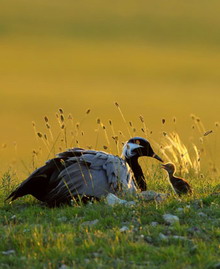 Click here for more photos |
At last, when the wild silver pheasant came in sight, we’d taken photos with their total size reaching 30G in just 3 hours — this "immortal bird" had finally been successfully captured with our camera. That night we drank and sang with excitement.
Q: What’s the most regrettable thing for you?
A: During the past 20 years, all my wishes have come true and all things that needed to be done have been done. The only regrettable thing is that my physical strength has been declining as I grow older, and there are still so many places I haven’t been to, such as Ali in Tibet. And I have a plan to shoot the North and South poles within five years.
Q: What advice can you give to those young photographers?
A: I hope more young photographers can join us, as I found there’s a shortage of a reserve force among the young generation. This is related to our employment system as an increasing number of young people are putting less time and effort into this hobby. They couldn’t have foreseen the economic return. And this is also the trend of our social development.
|
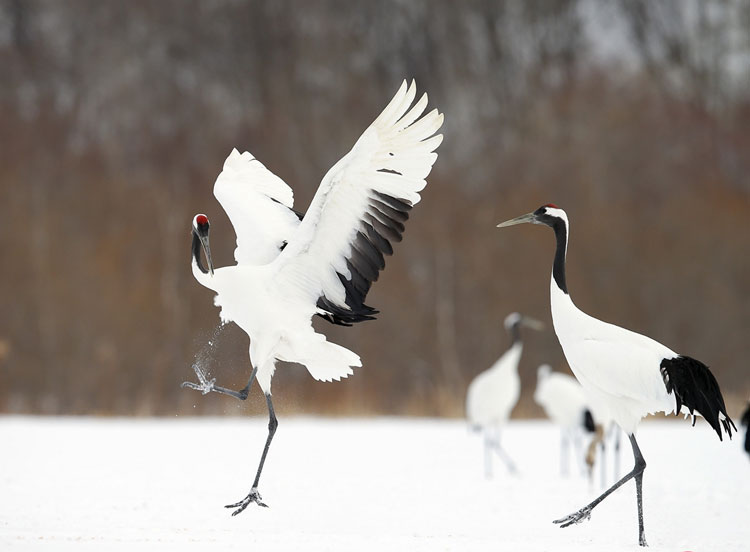 Red-crowned cranes are among the world's rarest birds and are primarily white with a patch of red bare skin on the crown. They let out sonorous calls and are often seen in wetlands and among reeds. In spring they usually breed in Heilongjiang province with the breeding season from April to June. Red-crowned cranes are monogamous and its lifespan is around 50 to 60 years, hence the name Xian He (crane of the immortals). The species can be found in northeastern China, eastern Mongolia, east of the Wusuli River in Russia, North and South Korea and Hokkaido in Japan. |
|
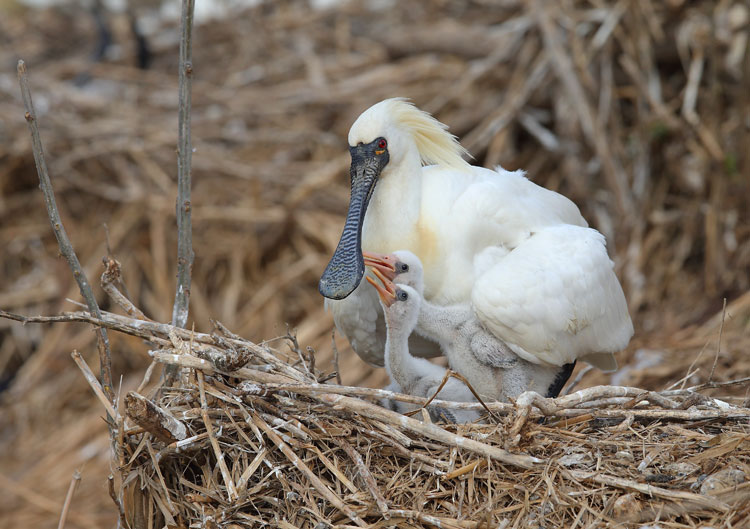 Black-faced spoonbills are endangered migratory birds and are rarely seen. They spend winters in Hainan and Guangdong. They are vigilant and easily frightened so are hard to observe in the wild. |
|
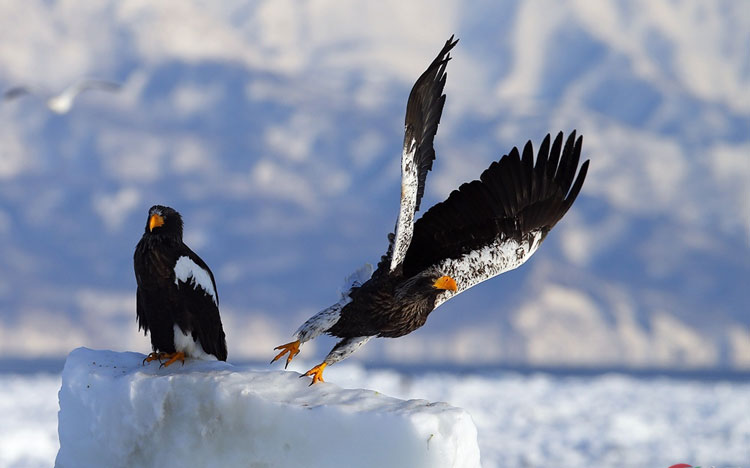 Steller’s sea eagle is a large bird in the family Accipitridae. Its length can range from 90 to 100 cm with a wingspan of between 203 and 250 cm and weight from 5 to 10 kg. It nests along sea coasts and large rivers, sometimes following the river to inland areas. It flies slowly and usually glides and circles in the sky. It's commonly seen standing on rocky outcrops, at the top of large trees and on sand dunes. |
|
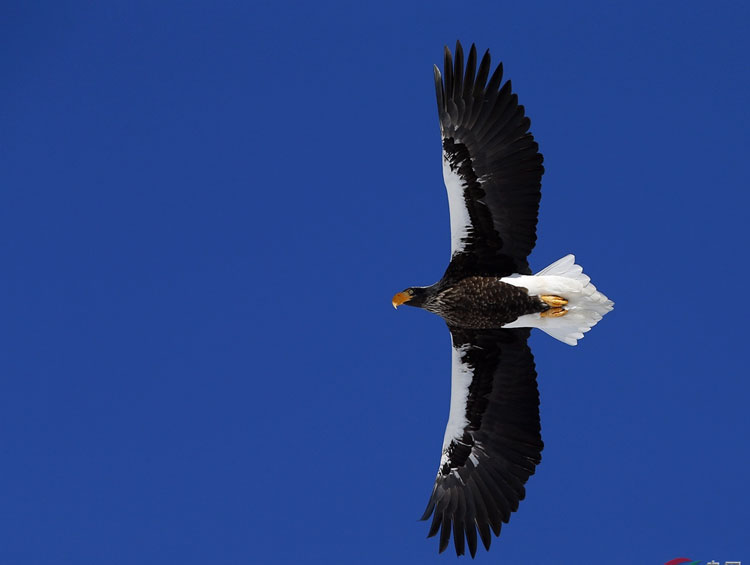 Steller's sea eagles fly in groups during winter and it's the largest bird to be seen. It mainly feeds on fish. It's distributed over a small region and its population is tiny, with only 6,000 to 7,000 in the world. It's even rarer in China where it's under first class state protection. |
|
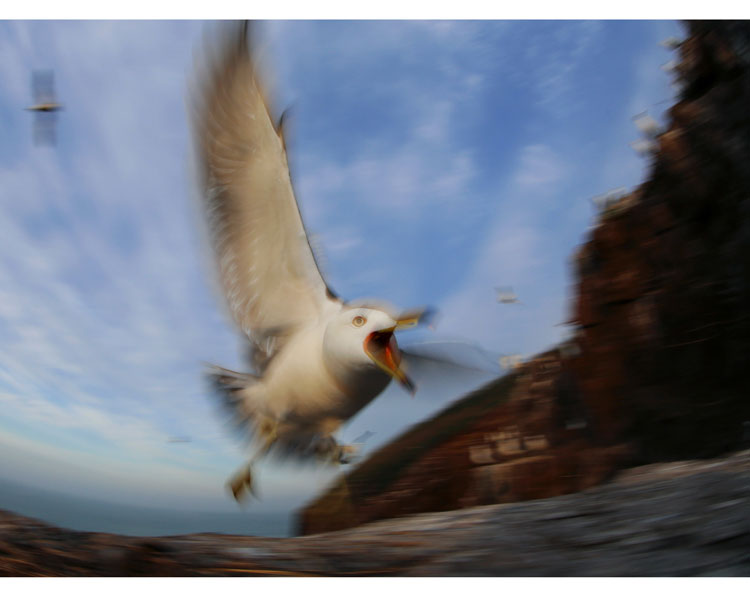 Black-tailed gulls nest near islands, the sea shore with exposed rocks and inland waters. It feeds mainly on fish and crustaceans. It also follows ships and eats discarded food. Its breeding season is from May to July and it builds its nest on cliffs and in woods. Its nest is like a bowl with 2 to 4 eggs. It breeds along the coast of Guangdong and Fujian provinces and winters along the coast of south and east of China and Taiwan. It can also occasionally be found in Yunnan province. |
|
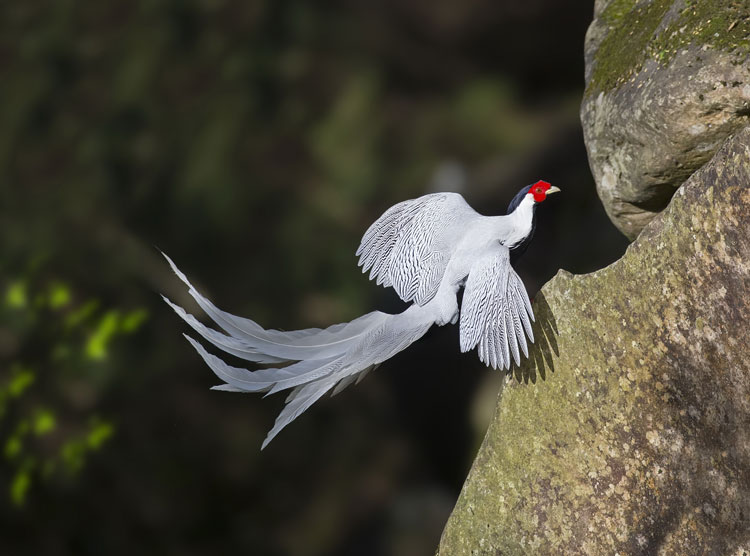 The silver pheasant is found in forests, sparse vegetation of evergreen broad-leaved forests and tropical ravine rainforests. It feeds on insects together with the stalks, fruits and seeds of plants. It moves around in pairs or small groups of 3 to 6. It's vigilant and rarely flies. In emergency it will fly to tree branches. Silver pheasants nest on low ground among bushes, with 4 to 6 eggs a brood. The chick matures early and is able to follow its parents on the very day it hatches. Its distribution is in China, Cambodia, Thailand and the Indo-China peninsula. |
|
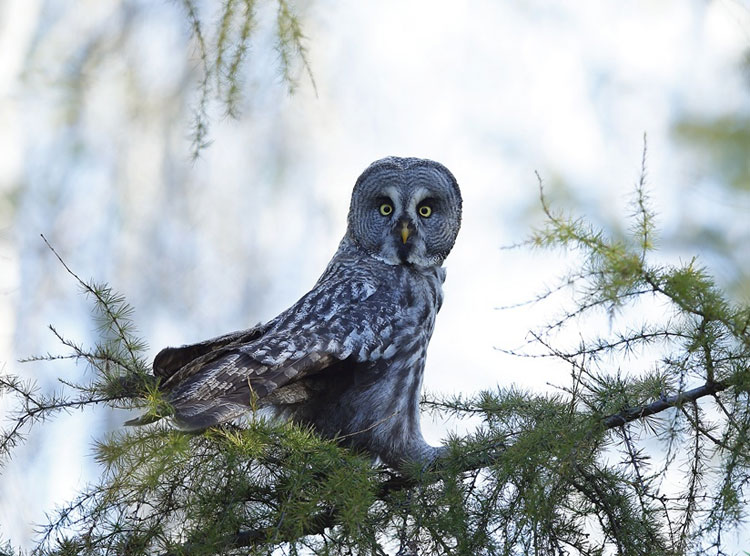 Most owls are nocturnal, rest in the daytime and are active in the night. Owls have sharp vision, their night sight is more than one hundred times better than that of humans. Unlike other birds, owls' eggs hatch one by one. After the first egg is laid, it starts to hatch. They feed mainly on rodents but insects, small birds, lizards and fish are also on the menu. |
|
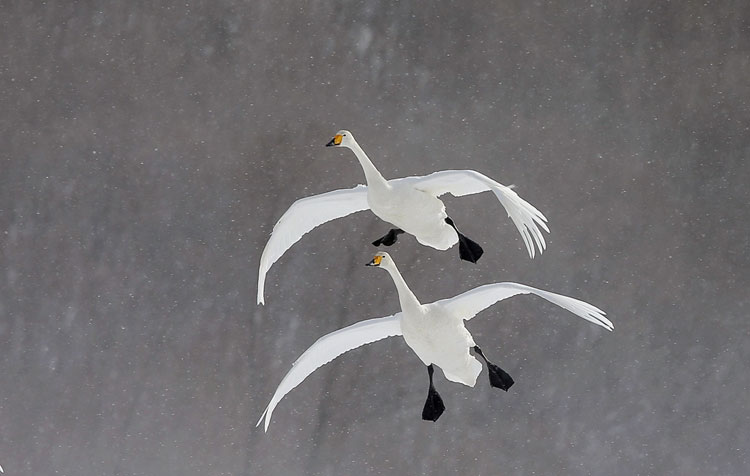 The swan is migratory bird. It nests near lakes and swamps and feeds mainly on submerged plants. Every year, during March and April, it flocks in large numbers from south to north, and breeds near the northern borders of China. Females usually lay 2 to 3 eggs in May. Females brood while males stand guard nearby. After October, swans will flock south and winter in a warmer climate. |
|
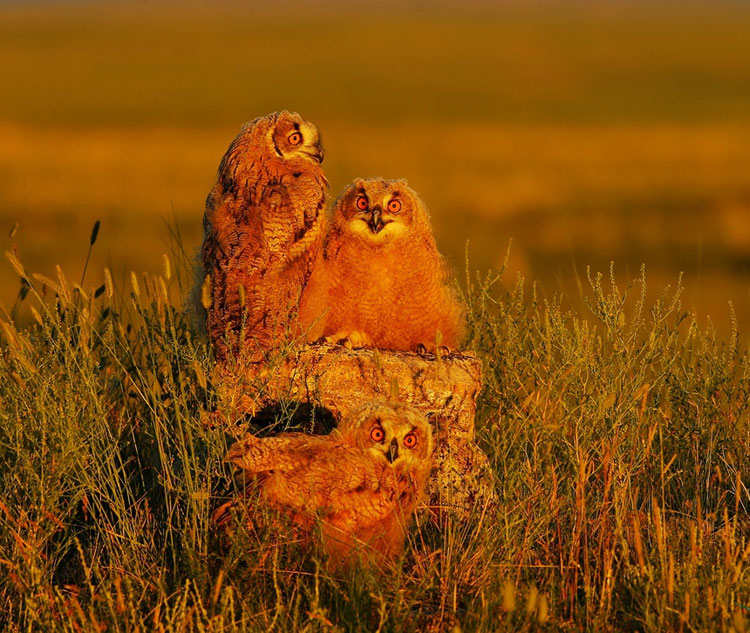 The eagle owl is the most popular owl in nature and can be found in most parts of Europe, Asia and Africa. It mainly feeds on rabbits, frogs, hedgehogs, insects and other birds. |
|
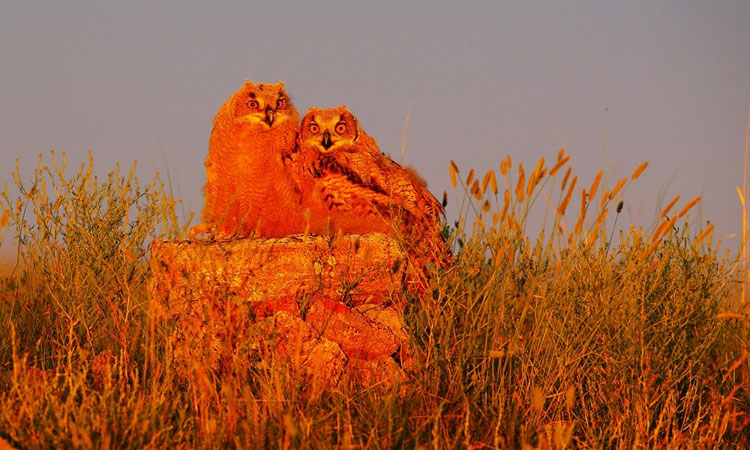 Two eagle owls |
|
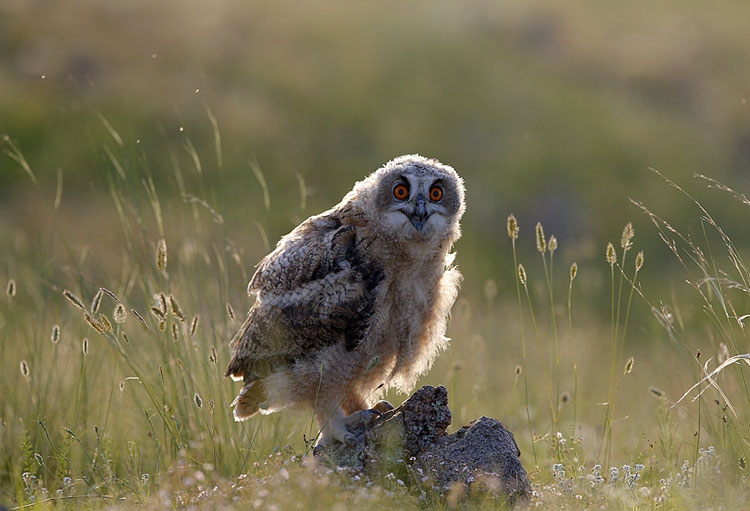 |
|
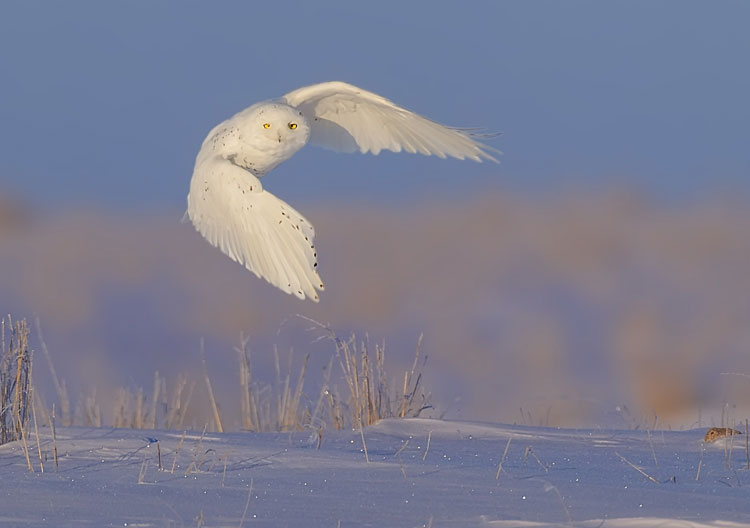 The snowy owl is white. It nests in frozen soil and tundra and can be found on dunes. It feeds on rodents, birds and insects. It breeds in the Arctic and Siberia, and winters in northern China, but it's rarely seen. Snowy owls can be active during both the day and nighttime. It builds nests on rocks and lays 12 eggs annually. |
|
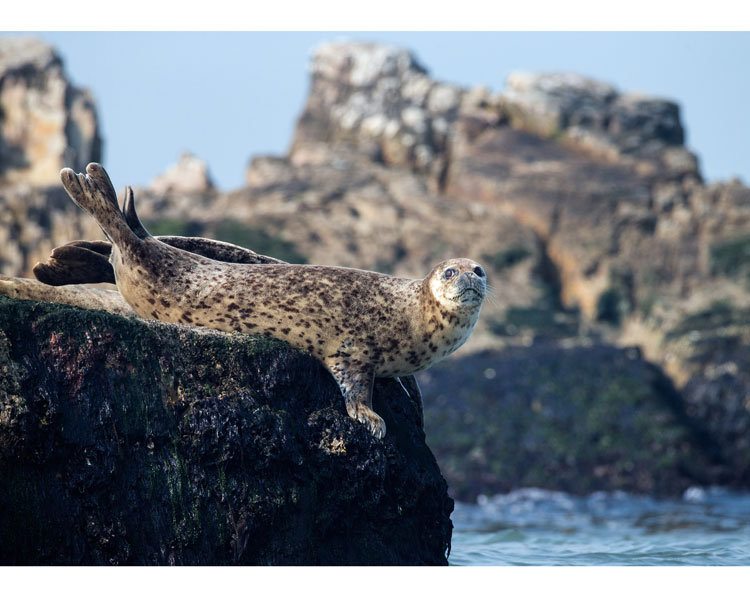 The spotted seal lives in the high-altitude area of the northern hemisphere. Their habitat in China is mainly in the costal areas of the Bohai and Yellow seas. Most grow to 1.5 to 2 meters long and weight more than 100 kilograms. They feed on fish and shellfish. |
|
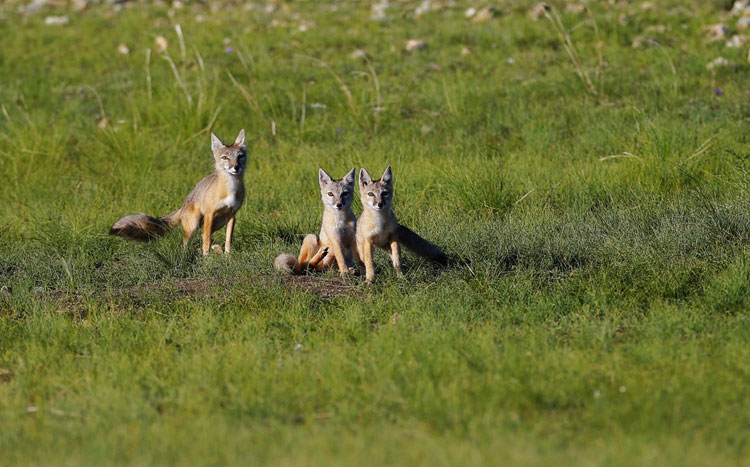 The sand fox measures 50 to 60 cm in length and weighs 2 to 3 kg. Its diet varies with the seasons. It's carnivorous, and feeds mainly on rodents, birds and insects. |
|
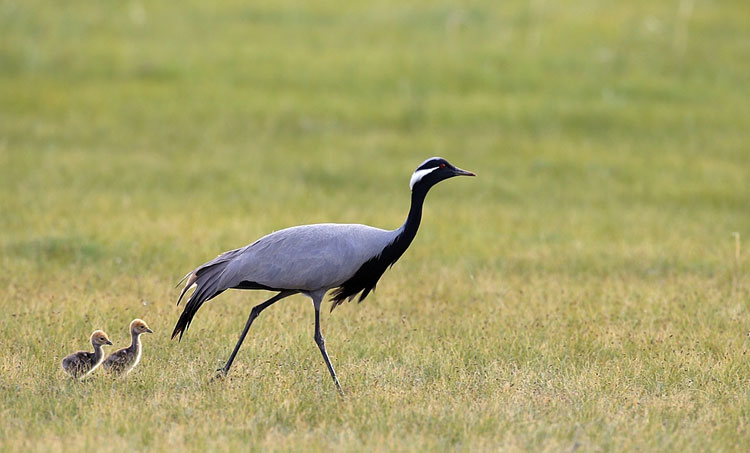 The mother crane and her nestlings. The demoiselle crane is found in pairs only in the breeding season. At other times it lives in a tribe or small group, sometimes, it can even be found single. It's timid and vigilant, good at running and lives far away from humans. Demoiselles rarely flock with common cranes. In spring, they reach the breeding grounds in west Jilin in the middle of March. From the end of March to early April, they’ll be in Heilongjiang and Hulun Buir League in Inner Mongolia. In autumn, they flock south in small groups or as a tribe in later October. They feed mainly on small fish, shrimps, frogs, tadpoles, aquatic insects, tender shoots, leaves, grass and crops. The demoiselle crane is rare in China. |
|
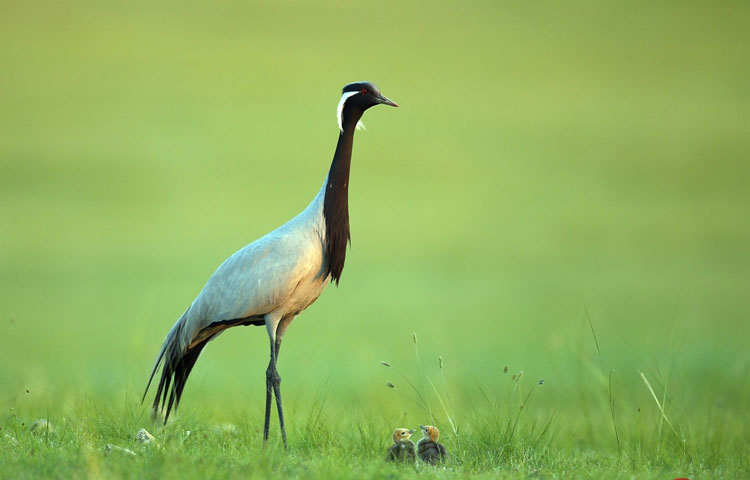 |
|
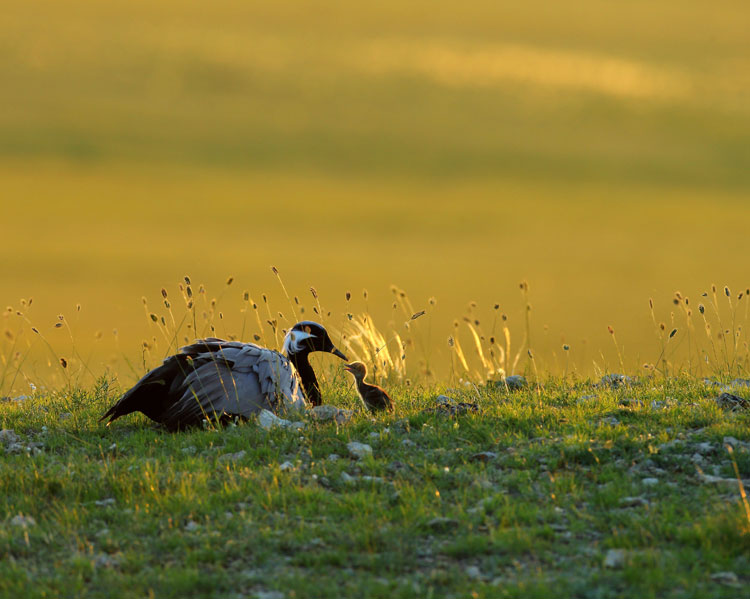 |
|
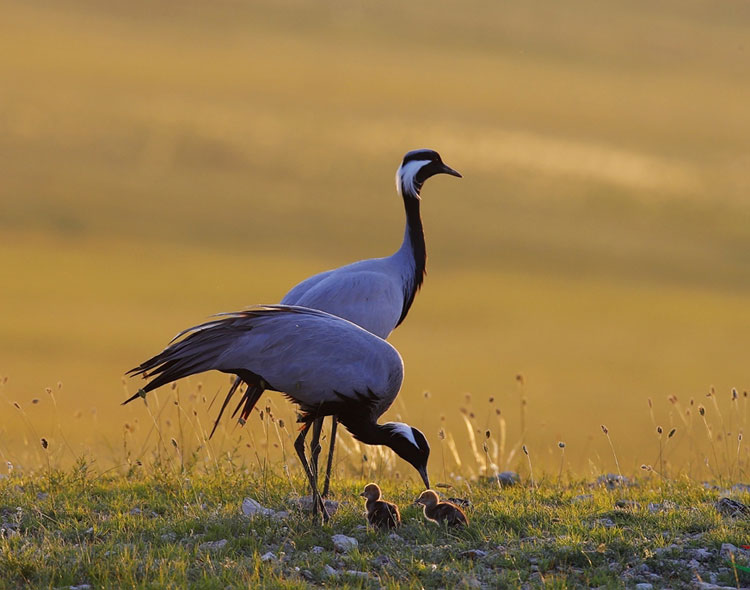 |
Click here for more nature photographers >>>